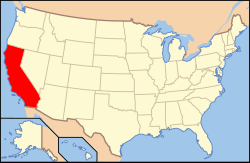
The Ontario Provincial Police (OPP) is the provincial police service of Ontario, Canada. The OPP patrols provincial highways and waterways; protects provincial government buildings and officials, with the exception of the legislative precinct; patrols unincorporated areas in northern Ontario; provides training, operational support, and funding to some Indigenous police forces; and investigates complex or multijurisdictional crimes across the province. The OPP also has a number of local mandates through contracts with municipal governments and First Nations, where it acts as the local police force and provides front-line services.

Security police usually describes a law enforcement agency which focuses primarily on providing security and law enforcement services to particular areas or specific properties. They may be employed by governmental, public, or private institutions. Security police are generally considered distinct from security guards as security police personnel typically hold some level of law enforcement authority. The exact powers held by security police vary widely between jurisdictions. Examples of these types of agencies include the U.S. FBI Police, the Indian Central Industrial Security Force, and the British Civil Nuclear Constabulary.
Special police usually describes a police force or unit within a police force whose duties and responsibilities are significantly different from other forces in the same country or from other police in the same force, although there is no consistent international definition. A special constable, in most cases, is not a member of a special police force (SPF); in countries in the Commonwealth of Nations and often elsewhere, a special constable is a voluntary or part-time member of a national or local police force or a person involved in law enforcement who is not a police officer but has some of the powers of a police officer.
A law enforcement officer (LEO), or peace officer in North American English, is a public-sector or private-sector employee whose duties primarily involve the enforcement of laws, protecting life & property, keeping the peace, and other public safety related duties. Law enforcement officers are designated certain powers & authority by law to allow them to carry out their responsibilities.

Public security or public safety is the prevention of and protection from events that could endanger the safety and security of the public from significant danger, injury, or property damage. It is often conducted by a state government to ensure the protection of citizens, persons in their territory, organizations, and institutions against threats to their well-being, survival, and prosperity.

The California Department of Corrections and Rehabilitation (CDCR) is the penal law enforcement agency of the government of California responsible for the operation of the California state prison and parole systems. Its headquarters are in Sacramento.

The Alaska State Troopers, officially the Division of Alaska State Troopers (AST), is the state police agency of the U.S. state of Alaska. It is a division of the Alaska Department of Public Safety (DPS). The AST is a full-service law enforcement agency that handles both traffic and criminal law enforcement. The AST is also involved in apprehending fugitives as part of the Alaska Fugitive Task Force, an inter-agency collaborative of Alaska police departments that cooperates with police agencies throughout the United States and less commonly with Interpol in apprehending wanted men and women. Unlike many lower 48 states, the AST also serves as Alaska’s primary environmental law enforcement agency; troopers assigned to the AST’s Division of Alaska Wildlife Troopers are known as "Alaska Wildlife Troopers" and primarily serve as game wardens, although they retain the same powers as other Alaskan state troopers.

The Washington State Patrol (WSP) is the state patrol agency for the U.S. state of Washington. Organized as the Washington State Highway Patrol in 1921, it was renamed and reconstituted in 1933. The agency is charged with the protection of the Governor of Washington and the grounds of the Washington State Capitol; security aboard the vessels and terminals of the Washington State Ferries; law enforcement on interstate and state highways in Washington; and providing specialized support to local law enforcement including laboratory forensic services, mobile field forces during periods of civil unrest or disaster, and tactical teams. The State Fire Marshal's Office, responsible for operation of the Washington State Fire Training Academy and for certain aspects of civil defense mobilization, is a component office of the Washington State Patrol, and the State Patrol is the managing agency of the Washington Fusion Center, which coordinates anti-terrorist and anti-organized crime activities within Washington.
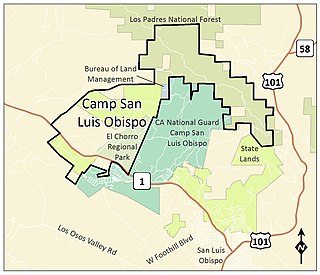
Camp San Luis Obispo is the original home of the California Army National Guard. It served as an Infantry Division Camp and Cantonment Area for the United States Army during World War II.

The Colorado Rangers Law Enforcement Shared Reserve (CLER), known publicly as the Colorado Rangers, is a statewide auxiliary police agency in the U.S. state of Colorado. It is a statewide law enforcement reserve of sworn POST-certified peace officers who serve as force multipliers, allowing Colorado law enforcement agencies to reduce costs and manpower through a shared force. It is the only such statewide police reserve force in the United States. The Colorado Rangers have existed in some capacity since Colorado Territory's formation in 1861, though the modern agency was formed in 2017 from the Colorado Mounted Rangers.
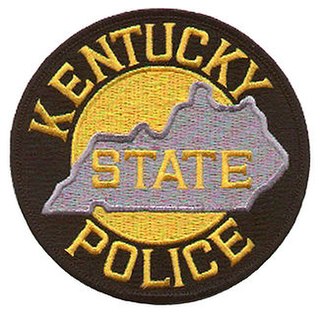
The Kentucky State Police (KSP) is a department of the Kentucky Justice and Public Safety Cabinet, and the official State Police force of the Commonwealth of Kentucky, responsible for statewide law enforcement. The department was founded in 1948 and replaced the Kentucky Highway Patrol. The department's sworn personnel hold the title State Trooper, and its nickname is The Thin Gray Line.
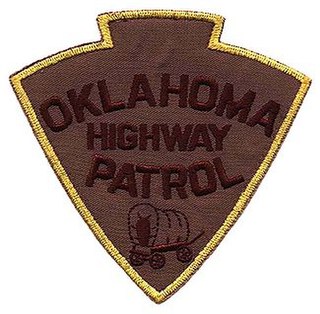
The Oklahoma Highway Patrol (OHP) is a major state law enforcement agency of the government of Oklahoma. A division of the Oklahoma Department of Public Safety, the OHP has traffic enforcement jurisdiction throughout the state. OHP was legislatively created on July 1, 1937, due to the growing problem of motor vehicle collisions, the expansion of highway systems, and the increase in criminal activities.
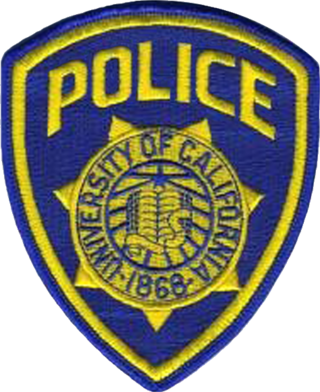
Police departments in the University of California system are charged with providing law enforcement to each of the system's campuses.
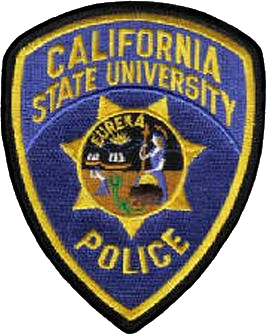
The California State University police departments(CSUPD) (known within the California State University system as the Cal State Police or University Police) are the police departments of the California State University system. Their police officers are duly sworn peace officers of the State of California, as established by section 830.2(c) of the California Penal Code. There are a total of 23 campuses in the California State University system, each with their own police department. Each campus' police department has its own chain of command; however, some of the policies are system-wide.

In the United States, a sheriff is the chief of law enforcement of a county. Sheriffs are usually either elected by the populace or appointed by an elected body.

The Maryland Natural Resources Police (NRP) is the law enforcement arm of the Maryland Department of Natural Resources (DNR), tasked with enforcing laws on the state's public lands and waterways, protecting fish and wildlife, and leading search and rescue efforts. The Natural Resources Police is also the state's maritime homeland security agency.

National Park Service rangers are among the uniformed employees charged with protecting and preserving areas set aside in the National Park System by the United States Congress and the President of the United States. While all employees of the agency contribute to the National Park Service mission of preserving unimpaired the natural and cultural resources set aside by the American people for future generations, the term "park ranger" is traditionally used to describe all National Park Service employees who wear the uniform. Broadly speaking, all National Park Service rangers promote stewardship of the resources in their care—either voluntary stewardship via resource interpretation, or compliance with statute or regulation through law enforcement. These comprise the two main disciplines of the ranger profession in the National Park Service.

The San Francisco Recreation & Parks Department is the city agency responsible for governing and maintaining all city-owned parks and recreational facilities in San Francisco, as well as Sharp Park Golf Course in Pacifica and Camp Mather in Tuolumne County. Current facilities include 4,113 acres (1,664 ha) of total recreational and open space with 3,400 acres (1,376 ha) of that land within San Francisco. The department runs 179 playgrounds and play areas, 82 recreation centers and clubhouses, nine swimming pools, five golf courses, 151 tennis courts, 72 basketball courts, 59 soccer fields, numerous baseball diamonds, and other sports venues.
The City of Los Angeles Park Ranger Division, LA Park Rangers or L.A. Park Rangers, is a park ranger division serving city parks in Los Angeles, California. The headquarters of the LA Park Rangers is located at the Griffith Park visitor's center. The division is a specialized agency controlled by the Department of Parks and Recreation and employs Park Rangers who are sworn peace officers under 830.31 of the California Penal Code.

National Park Service Law Enforcement Rangers are uniformed federal law enforcement officers with broad authority to enforce federal and state laws within National Park Service (NPS) sites. The National Park Service commonly refers to law enforcement operations in the agency as Visitor and Resource Protection. In units of the National Park System, law enforcement rangers are the primary police agency. The National Park Service also employs special agents who conduct more complex criminal investigations. Rangers and agents receive extensive police training at the Federal Law Enforcement Training Centers and annual in-service and regular firearms training.


